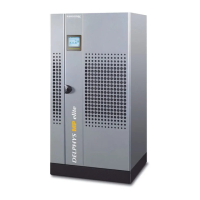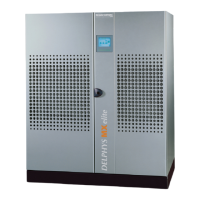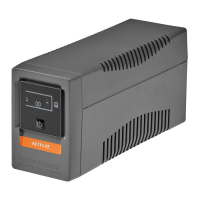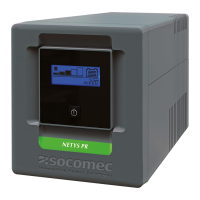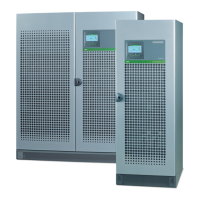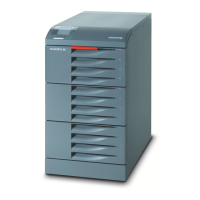UPS/NTA GB/DELMP_EXPC1C3C6_B 48
5.3 OVERLOAD MONITORING
Principle:
The UPS overload monitoring is based on reference levels (the higher the load rate, shorter the
overload capacity). There are two distinct reference levels:
- the first one corresponds to the overload capacity of the bypass input,
- the second one corresponds to the overload capacity of the inverter.
While operating from the inverter, the load is automatically transferred to the automatic bypass
when the overload capacity reaches 50% and the bypass input is present.
Signalling and automatic actions:
The UPS OVERLOAD alarm is activated if:
- the load rate exceeds 103% ("LOAD ON INVERTER"),
- the load rate exceeds 105% ("LOAD ON MAINS").
The alarm disappears if the load rate drops below 100%
Typical unit overload < 30°C
Overload rate Inverter and byp
locked
Automatic bypass Total overload time
inverter + automatic byp
110% 60 minutes 60 minutes 30 min + 60 min
125% 10 minutes 10 minutes 5 min + 10 min
150% 1 minute 1 minute 30 sec + 1 min
NOTE: Should an extended overload occur, the static switch warms up, which results in the
disconnection of the load after some time.
If the load is supplied by the bypass input following an automatic transfer, no return to the
inverter is possible as long as the UPS is overloaded and the UPS OVERLOAD alarm has not
been reset.
5.4 REMAINING BACK UP TIME
The remaining back up time is displayed on the control panel when the UPS operates from the
battery. The calculation is obtained from the battery capacity and the Ampères per hour (Ah)
consumed by the load.
Text displayed can be set by Commissioning, Inspection and Maintenance Department.

